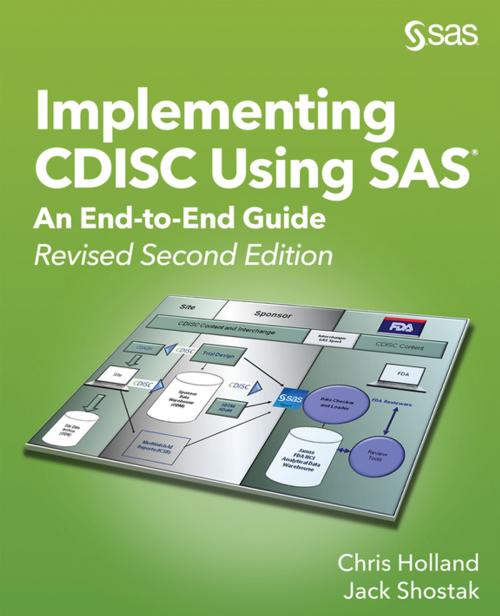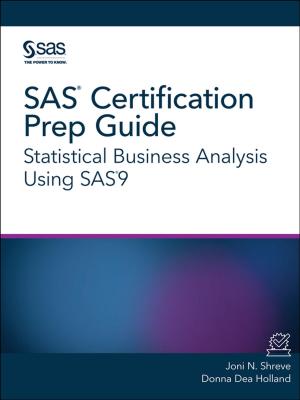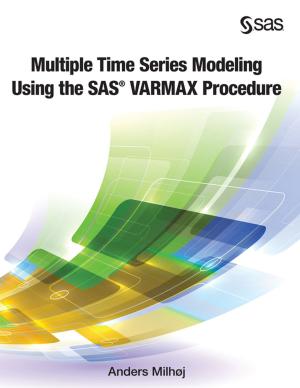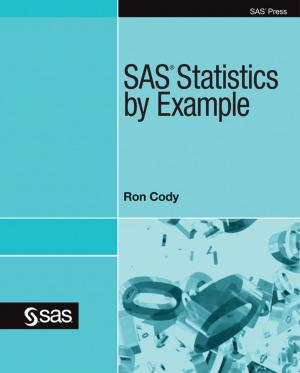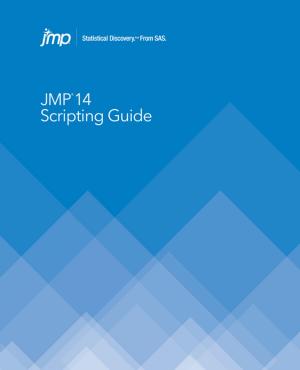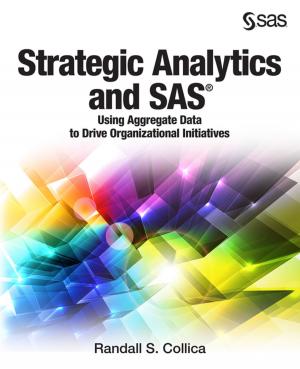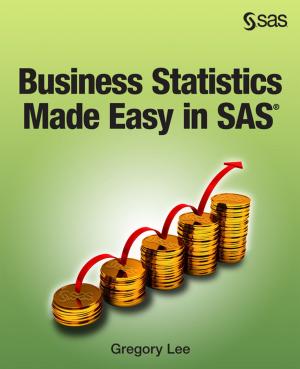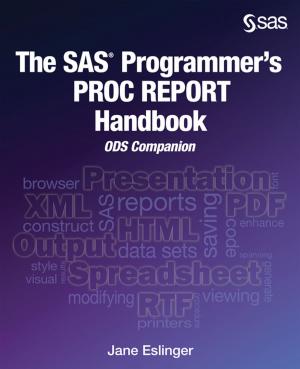Implementing CDISC Using SAS
An End-to-End Guide, Revised Second Edition
Nonfiction, Computers, Application Software, Business Software| Author: | Chris Holland, Jack Shostak | ISBN: | 9781642952414 |
| Publisher: | SAS Institute | Publication: | May 30, 2019 |
| Imprint: | SAS Institute | Language: | English |
| Author: | Chris Holland, Jack Shostak |
| ISBN: | 9781642952414 |
| Publisher: | SAS Institute |
| Publication: | May 30, 2019 |
| Imprint: | SAS Institute |
| Language: | English |
For decades researchers and programmers have used SAS to analyze, summarize, and report clinical trial data. Now Chris Holland and Jack Shostak have updated their popular Implementing CDISC Using SAS, the first comprehensive book on applying clinical research data and metadata to the Clinical Data Interchange Standards Consortium (CDISC) standards.
Implementing CDISC Using SAS: An End-to-End Guide, Revised Second Edition, is an all-inclusive guide on how to implement and analyze the Study Data Tabulation Model (SDTM) and the Analysis Data Model (ADaM) data and prepare clinical trial data for regulatory submission. Updated to reflect the 2017 FDA mandate for adherence to CDISC standards, this new edition covers creating and using metadata, developing conversion specifications, implementing and validating SDTM and ADaM data, determining solutions for legacy data conversions, and preparing data for regulatory submission. The book covers products such as Base SAS, SAS Clinical Data Integration, and the SAS Clinical Standards Toolkit, as well as JMP Clinical. Topics included in this edition include an implementation of the Define-XML 2.0 standard, new SDTM domains, validation with Pinnacle 21 software, event narratives in JMP Clinical, STDM and ADAM metadata spreadsheets, and of course new versions of SAS and JMP software. The second edition was revised to add the latest C-Codes from the most recent release as well as update the make_define macro that accompanies this book in order to add the capability to handle C-Codes. The metadata spreadsheets were updated accordingly.
Any manager or user of clinical trial data in this day and age is likely to benefit from knowing how to either put data into a CDISC standard or analyzing and finding data once it is in a CDISC format. If you are one such person--a data manager, clinical and/or statistical programmer, biostatistician, or even a clinician--then this book is for you.
For decades researchers and programmers have used SAS to analyze, summarize, and report clinical trial data. Now Chris Holland and Jack Shostak have updated their popular Implementing CDISC Using SAS, the first comprehensive book on applying clinical research data and metadata to the Clinical Data Interchange Standards Consortium (CDISC) standards.
Implementing CDISC Using SAS: An End-to-End Guide, Revised Second Edition, is an all-inclusive guide on how to implement and analyze the Study Data Tabulation Model (SDTM) and the Analysis Data Model (ADaM) data and prepare clinical trial data for regulatory submission. Updated to reflect the 2017 FDA mandate for adherence to CDISC standards, this new edition covers creating and using metadata, developing conversion specifications, implementing and validating SDTM and ADaM data, determining solutions for legacy data conversions, and preparing data for regulatory submission. The book covers products such as Base SAS, SAS Clinical Data Integration, and the SAS Clinical Standards Toolkit, as well as JMP Clinical. Topics included in this edition include an implementation of the Define-XML 2.0 standard, new SDTM domains, validation with Pinnacle 21 software, event narratives in JMP Clinical, STDM and ADAM metadata spreadsheets, and of course new versions of SAS and JMP software. The second edition was revised to add the latest C-Codes from the most recent release as well as update the make_define macro that accompanies this book in order to add the capability to handle C-Codes. The metadata spreadsheets were updated accordingly.
Any manager or user of clinical trial data in this day and age is likely to benefit from knowing how to either put data into a CDISC standard or analyzing and finding data once it is in a CDISC format. If you are one such person--a data manager, clinical and/or statistical programmer, biostatistician, or even a clinician--then this book is for you.
